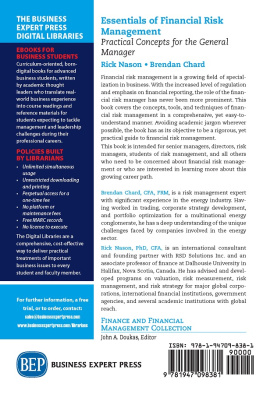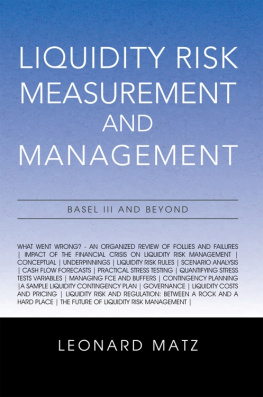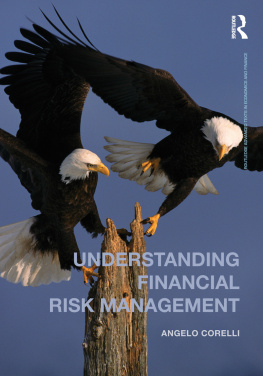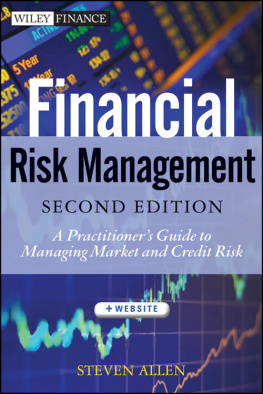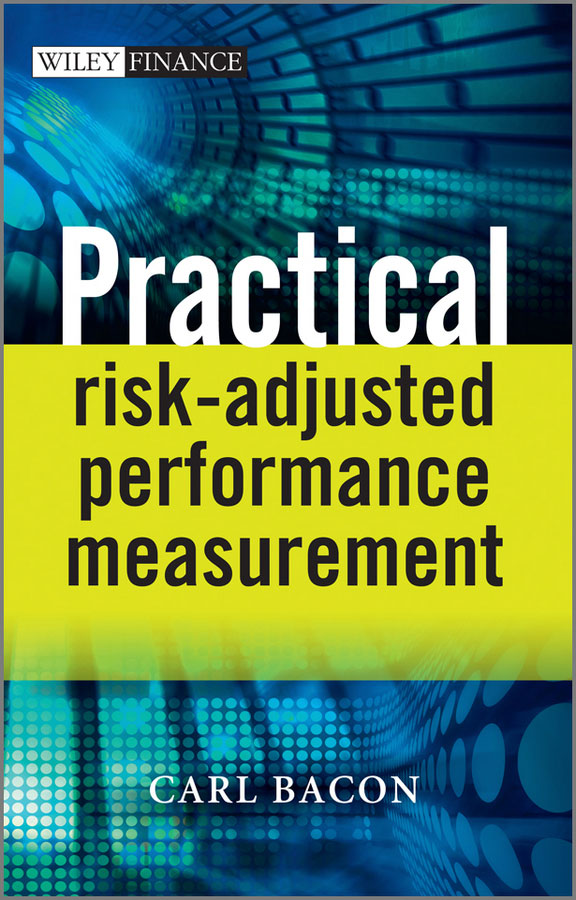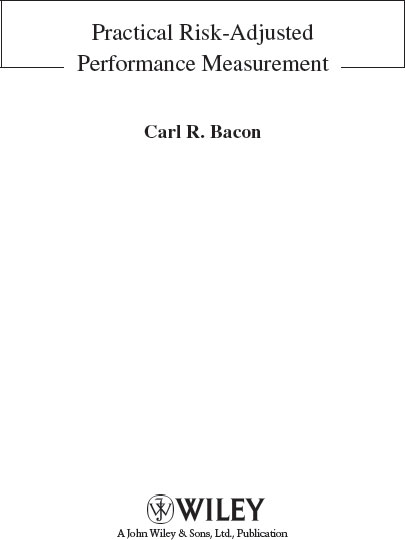For other titles in the Wiley Finance series
please see www.wiley.com/finance
2013 John Wiley & Sons, Ltd
Registered Office
John Wiley & Sons Ltd, The Atrium, Southern Gate, Chichester, West Sussex, PO19 8SQ, United Kingdom
For details of our global editorial offices, for customer services and for information about how to apply for permission to reuse the copyright material in this book please see our website at www.wiley.com .
All rights reserved. No part of this publication may be reproduced, stored in a retrieval system, or transmitted, in any form or by any means, electronic, mechanical, photocopying, recording or otherwise, except as permitted by the UK Copyright, Designs and Patents Act 1988, without the prior permission of the publisher.
Wiley publishes in a variety of print and electronic formats and by print-on-demand. Some material included with standard print versions of this book may not be included in e-books or in print-on-demand. If this book refers to media such as a CD or DVD that is not included in the version you purchased, you may download this material at http://booksupport.wiley.com . For more information about Wiley products, visit www.wiley.com .
Designations used by companies to distinguish their products are often claimed as trademarks. All brand names and product names used in this book are trade names, service marks, trademarks or registered trademarks of their respective owners. The publisher is not associated with any product or vendor mentioned in this book. This publication is designed to provide accurate and authoritative information in regard to the subject matter covered. It is sold on the understanding that the publisher is not engaged in rendering professional services. If professional advice or other expert assistance is required, the services of a competent professional should be sought.
Library of Congress Cataloging-in-Publication Data
Bacon, Carl R.
Practical risk-adjusted performance measurement / Carl R. Bacon.
p. cm.
Includes bibliographical references and index.
ISBN 978-1-118-36974-6 (cloth)
1. Financial risk management. 2. Performance standards. 3. Risk management. I. Title.
HD61.B33 2013
658.155dc23
2012023317
A catalogue record for this book is available from the British Library.
ISBN 978-1-118-36974-6 (hardback) ISBN 978-1-118-39153-2 (ebk)
ISBN 978-1-118-39152-5 (ebk) ISBN 978-1-118-39137-2 (ebk)
To my parents
Preface
Beauty is in the eye of the beholder.
Margaret Wolfe Hungerford (18551897), Molly Bawn 1878
The book I wanted to read on risk did not exist and this book attempts to fill that gap. There are many books and articles, perhaps hundreds, written on the subject of portfolio risk but for the most part they focus on ex-ante risk, tend to be highly academic with authors seemingly in a competition to present the material in as complex a language as possible and are typically devoid of worked examples. This book is written for risk and performance measurement practitioners from a buy side, asset management perspective, focusing on quantitative ex-post measures rather than the qualitative aspects of risk.
Risk has an undeserved reputation within asset management firms for being an overly complex, mathematical subject. The purpose of this book is to simplify the subject and demonstrate with many practical examples that risk is perfectly straightforward and not as complicated as it might seem.
In addition I wanted to document, with appropriate referencing, as many discrete ex-post risk measures as possible in a structured format, filling gaps, encouraging consistency, suggesting new measures and highlighting possible areas of confusion or misrepresentation. In truth many of these measures are rarely used in practice, often for good reason.
This book will not recommend any particular risk measure, although it is difficult to disguise my preferences and prejudices. Risk like beauty is very much in the eye of the beholder and different risk measures will suit different investment strategies or investor concerns at different times. This book should provide enough information and insight for the reader to determine their own preferences.
In terms of structure Chapter 1 is naturally an introduction to the subject of risk in the context of asset management firms. In Chapter 2 the foundations are laid introducing the descriptive statistics that will be used in later chapters. The following chapters are structured according to the type of risk measure being considered, simple measures in Chapter 3 , regression measures in Chapter 4 , drawdown in Chapter 5 , partial moments in Chapter 6 , extreme risk in Chapter 7 , risk measures for fixed income instruments in Chapter 8 and risk-adjusted returns in Chapter 9 .
In the penultimate Chapter 10 there is a discussion about which risk measures to use and finally in Chapter 11 their application in terms of risk control.
The objective of this book is to provide a complete list of ex-post risk measures used by asset managers. Although some have little merit I've avoided censoring measures I dislike. If a risk measure is not included, perhaps it's in continuous not discrete form, maybe I don't fully understand it with enough confidence to write about it, or in a few rare cases I've determined that it literally has no merit.
Acknowledgements
My thanks are owed to many that have contributed to this book, both directly and indirectly, working colleagues over many years, attendees at my various training courses and workshops which I hope will continue, attentive readers of my previous books that have spotted a number of errors and indeed made many good suggestions, numerous fellow GIPS committee members that have been so insightful and of course the many authors that have laid the foundations of this subject.
I'm particularly thankful to the diligent reviewers of this book: Kate Maryniak and Ralph Purtscher-Wydenbruck of StatPro, Jerry Pinto, CFA of CFA Institute, Philip Lawton, CFA, CIPM, PRM of Aite Group, Colin Morrison of Paradigm Investment Consulting Ltd and Dimitri Senik, CFA, FCCA.
Of course all errors and omissions are my own
Carl R. Bacon CIPM
Deeping St James
April 2012
Introduction
Money is like muck, not good except it be spread.
Francis Bacon (15611626)
DEFINITION OF RISK
Risk means very different things to different audiences at different times; risk is truly in the eye of the beholder. In the context of portfolio management the Oxford English Dictionary provides a surprisingly good definition of risk:
The potential impact of an event determined by combining the likelihood of the event occurring with the impact should it occur.
Risk is the combination of exposure and uncertainty. As Holton (2004) so eloquently points out it is not risky to jump out of an aircraft without a parachute, death is certain. Holton also points out that we can never operationally define risk; at best, we can operationally define our perception of risk.
Another common and effective, but broader definition of risk is exposure to uncertainty .
Risk types
Within asset management firms there are many types of risk that should concern portfolio managers and senior management. For convenience I've chosen to classify risk into five main categories:
Compliance Risk
Operational Risk
Liquidity Risk
Counterparty Risk


